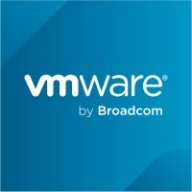

SnapLogic and Spring Cloud Data Flow are both key players in the data integration and workflow automation space. SnapLogic has an advantage in deployment flexibility and a broader set of pre-built connectors, whereas Spring Cloud Data Flow is recognized for its open-source adaptability and a microservices-based architecture.
Features: SnapLogic offers a wide range of pre-built connectors, robust data processing capabilities, and a user-friendly visual interface for rapid integration. In contrast, Spring Cloud Data Flow excels with its microservices orchestration, stream and task-driven data processing, and simplicity in creating pipelines.
Room for Improvement: SnapLogic could enhance its user interface scalability for more complex integrations and improve cost-effectiveness for smaller businesses. The range of connectors, while extensive, can further expand to cover niche applications and newer technologies. Greater customization options in workflow processes could also enhance user satisfaction. Spring Cloud Data Flow might benefit from simplifying its deployment process to support less technical users and improving real-time monitoring tools. Enhanced documentation and community support could help new users. Also, expanding its feature set for non-streaming data processes could broaden its applicability.
Ease of Deployment and Customer Service: SnapLogic provides a cloud-based deployment model with intuitive drag-and-drop functionalities, supported by expansive documentation and efficient customer support. This setup makes it ideal for rapid deployments. In contrast, Spring Cloud Data Flow requires a higher level of technical expertise due to its open-source nature, focusing on managing microservices orchestrations, which might demand more careful planning and support from the community rather than official channels.
Pricing and ROI: SnapLogic generally involves higher upfront costs but offers faster deployment and quicker ROI due to its user-friendly platform. The support and extensive features justify the investment for organizations seeking rapid integration. Spring Cloud Data Flow, being open-source, offers potentially lower initial costs but achieving ROI might take longer as it involves complex configurations and management of microservices. This makes it cost-effective for organizations with the expertise to leverage its open-source advantages fully.
| Product | Market Share (%) |
|---|---|
| SnapLogic | 1.1% |
| Spring Cloud Data Flow | 1.1% |
| Other | 97.8% |

| Company Size | Count |
|---|---|
| Small Business | 11 |
| Midsize Enterprise | 5 |
| Large Enterprise | 11 |
| Company Size | Count |
|---|---|
| Small Business | 3 |
| Midsize Enterprise | 1 |
| Large Enterprise | 5 |
The SnapLogic Intelligent Integration Platform uses AI-powered workflows to automate all stages of IT integration projects – design, development, deployment, and maintenance – whether on-premises, in the cloud, or in hybrid environments. The platform’s easy-to-use, self-service interface enables both expert and citizen integrators to manage all application integration, data integration, API management, B2B integration, and data engineering projects on a single, scalable platform. With SnapLogic, organizations can connect all of their enterprise systems quickly and easily to automate business processes, accelerate analytics, and drive transformation.
Spring Cloud Data Flow is a toolkit for building data integration and real-time data processing pipelines.
Pipelines consist of Spring Boot apps, built using the Spring Cloud Stream or Spring Cloud Task microservice frameworks. This makes Spring Cloud Data Flow suitable for a range of data processing use cases, from import/export to event streaming and predictive analytics. Use Spring Cloud Data Flow to connect your Enterprise to the Internet of Anything—mobile devices, sensors, wearables, automobiles, and more.
We monitor all Data Integration reviews to prevent fraudulent reviews and keep review quality high. We do not post reviews by company employees or direct competitors. We validate each review for authenticity via cross-reference with LinkedIn, and personal follow-up with the reviewer when necessary.